A groundbreaking has been held for the affordable housing project at 401 N Monticello Avenue in East Garfield Park. Dubbed the Conservatory Apartments, the structure will be located just north of the train tracks and the namesake Garfield Park Conservatory. It is replacing a vacant surface parking lot once used by the now closed Laura Ward Elementary School directly across the street. The project is being led by the Interfaith Housing Development Corporation (IHDC) and was designed by Michigan-based HED Architecture.
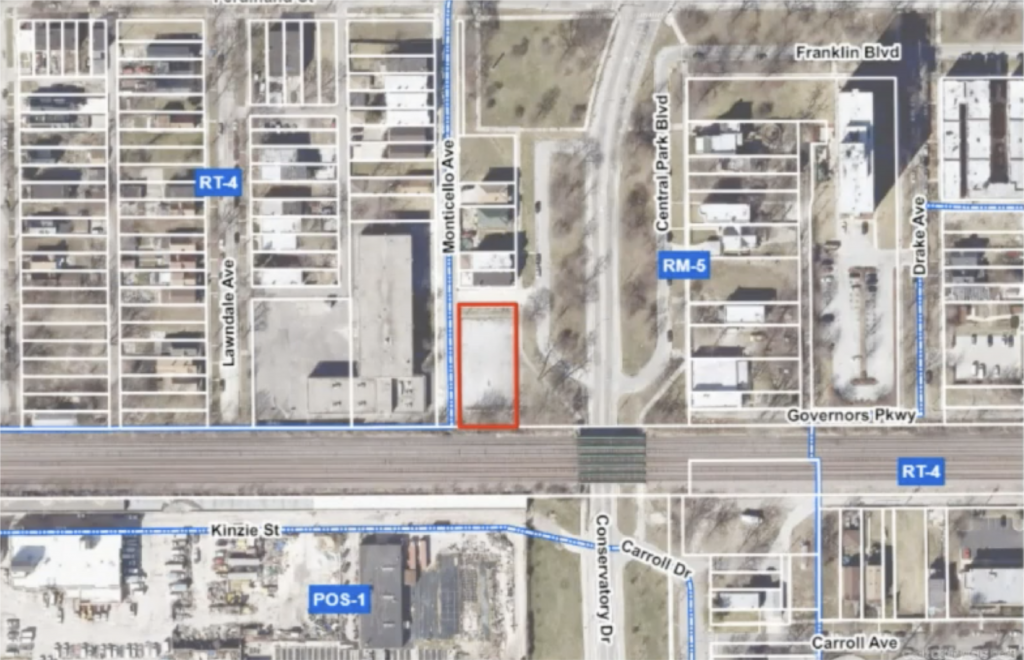
Site map for Conservatory Apartments by HED Architects
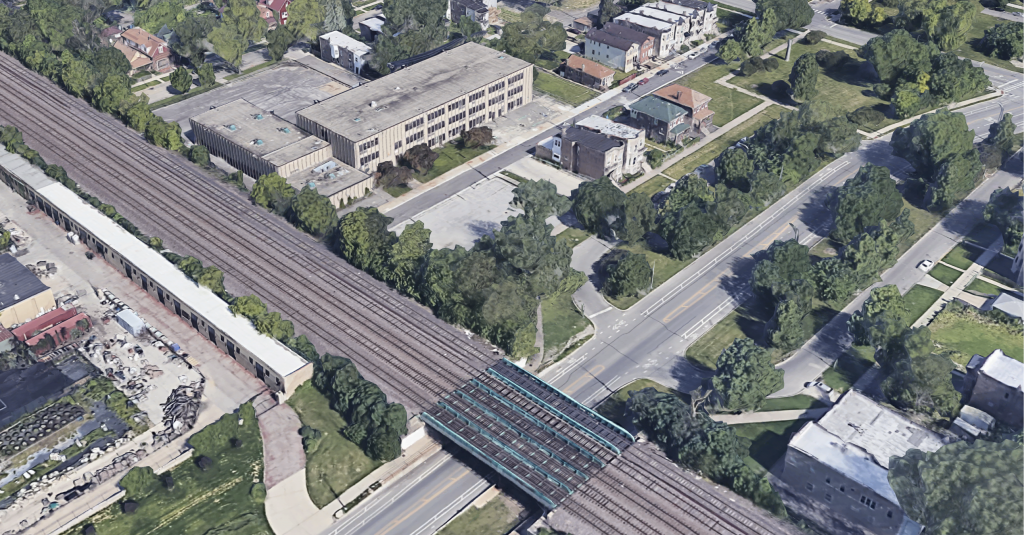
View onto site via Google Maps
The completely affordable project will bring new accomplishments in sustainability for the city, becoming the largest example of Passive House Certification in the city showing that it can be done in a midwestern climate. This means it will utilize a combination of energy efficient construction methods mixed with passive solar and internal heat gains to reduce heating and cooling demands. The design team is achieving this with patterned glass, tight and highly insulated building envelope, a solar panel system, energy efficient appliances and lighting, as well as water saving fixtures.
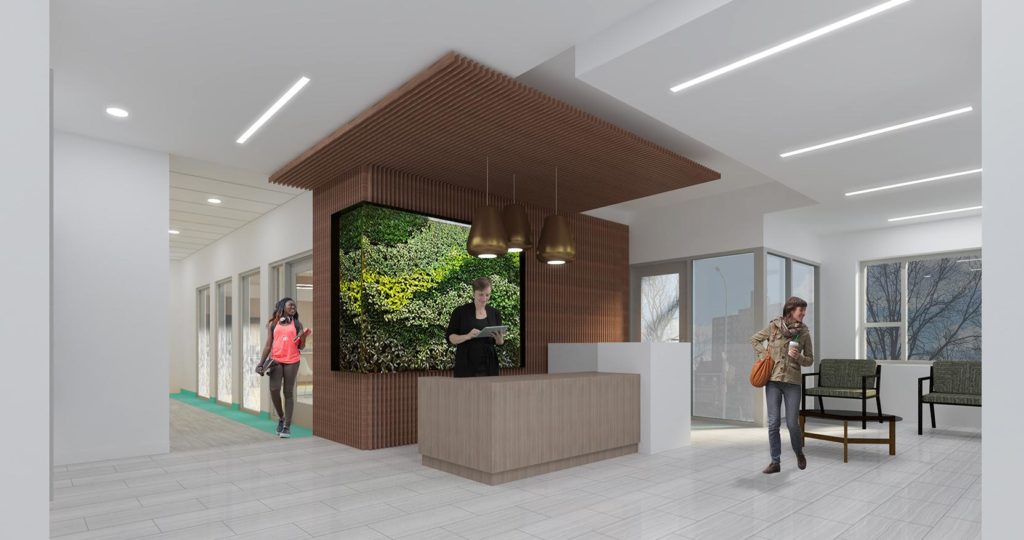
However the spaces inside will be equally as important to the community as it will hold 43 residential units made up of 305-square-foot studios available for those making less than 30 and 50 percent of the Area Median Income (AMI). Of these 34 will be set aside for those experiencing homelessness, chronic disabilities, mental illness, and substance abuse, with the remaining nine going to those from the Illinois State Referral Network. With no vehicle parking on site, the ground floor will contain a shared laundry room, bike parking, community garden, and office space for its non-profit partner Deborah’s Place.
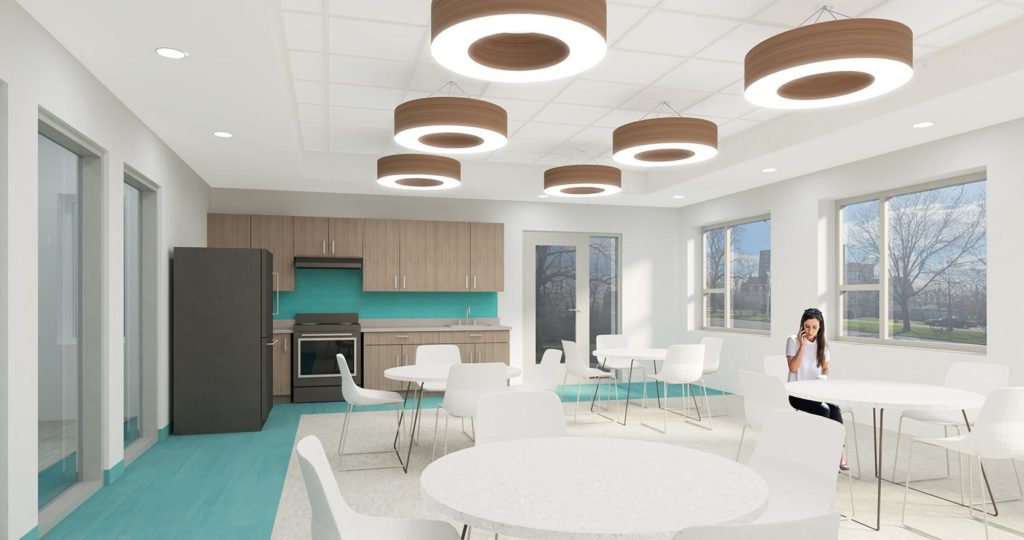
Interior rendering of Conservatory Apartments by HED Architects
This will allow for the organization to have an on-site assigned case manager who will help with crisis intervention, job placement, and advocacy of financial benefits. With a construction cost of $12.1 million for the 25,000-square-foot structure, funding was mostly secured in 2021 with a part coming from TIF and the Illinois Housing Development Authority. Chicago-based Henry Bros. Co is leading the construction efforts and hopes to have most of the work on the four-story structure completed by late 2023.
Subscribe to YIMBY’s daily e-mail
Follow YIMBYgram for real-time photo updates
Like YIMBY on Facebook
Follow YIMBY’s Twitter for the latest in YIMBYnews

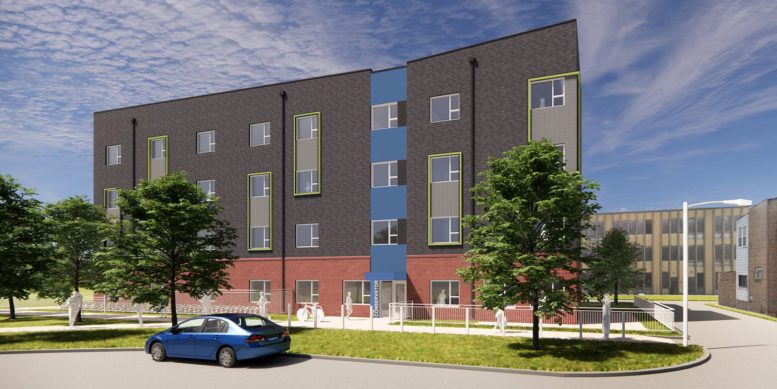
The first steps of gentrification moving into East Garfield Park.
How is affordable housing gentrification? Gentrification is really something done by the assessor’s office is it not? If tax abatement were possible for residents of communities that are supposedly subject to this ‘gentrification’ could we not keep a mix of new and established residents together? Is this ‘gentrification’ then really the pariah that people make it out to be or rather it is simply a move to fill vacant lots with people to put a larger critical mass into a neighborhood whereby business owners are incentivized to add commercial to a neighborhood and build the neighborhood up? Funny back in the late 1800s and early 1900s did we call it gentrification when it was one European group against another, no, it was not that then and not that now it is economic movement from established neighborhoods into established but underdeveloped neighborhoods that do not have the resources or opportunities of more established neighborhoods. I concede the means by which current residents of a neighborhood are kept in the neighborhoods they reside in must be revamped but to simply say gentrification is the easy way to decry development without engaging in the broader view.
Much welcome development to maintaining the community. Some people see all new construction as gentrification. Even if it is gentrification, not all is negative. The neighborhood has tons of vacant lots that have not been used in decades.
“Gentrification” is a misnomer for new investment in areas that have lacked investment. There is no economic difference between putting new housing on land that had none and putting more expensive housing on land that has less expensive housing. This isn’t “maintaining the community.” It’s changing the community. This wouldn’t be happening if large new residential developments weren’t happening just to the east.